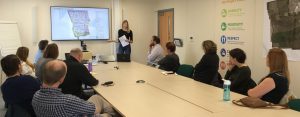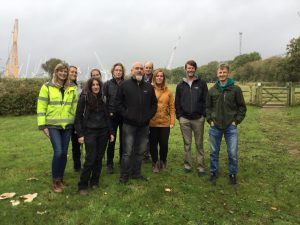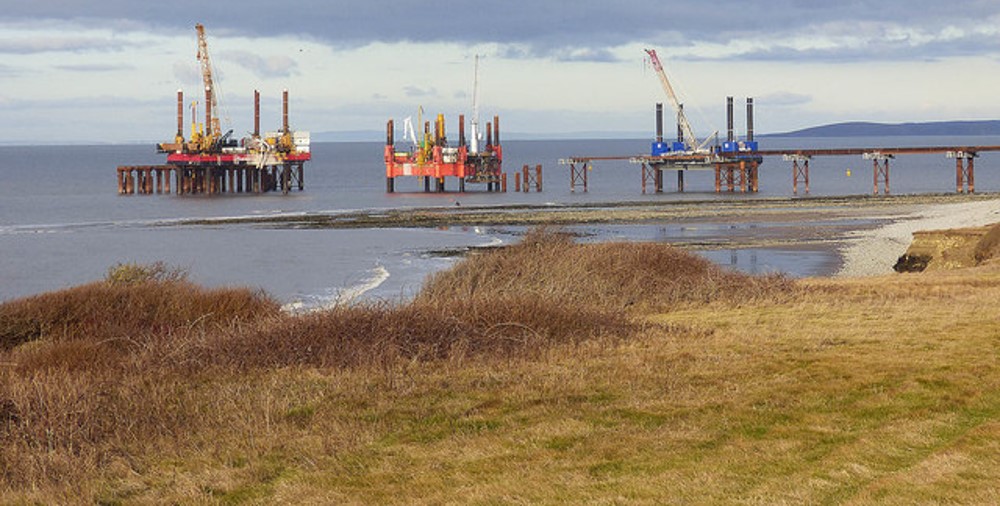Ecological Mitigation at Hinkley Point C (HPC) Nuclear Power Station
Somerset, 11 October 2019
Laura Boggeln, South West Section Committee
A group from the South West Member Network were taken over the secure threshold of one of the UK’s largest infrastructure projects, the construction site at Hinkley Point C (HPC). Following an insightful talk by an EDF representative about the background of the project, the group were able to gain a rare insight into the ecological considerations at HPC. Laura Boggeln (SW Section Committee Member and Mott MacDonald Ecologist), with input from Luke Stevens (EDF Land and Ecology Lead) and Tim Crabb (Mott MacDonald HPC Site Consultant Ecologist), then delivered a detailed presentation covering the ecological constraints, ecological mitigation (on and off-site) and ecological monitoring associated with the project.

The construction site is overwhelmingly large, and the group enjoyed observing some of the implemented ecological mitigation features first-hand during a private minibus tour around the site. This included Green Lane, a retained and enhanced habitat corridor which bisects the construction site and still records barbastelles and horseshoe bats as well as retaining an active badger sett! A lighting strategy is in place here and features to retain connectivity of Green Lane to existing off-site habitat over the construction haul roads include landscape planting with movable ‘tree tubs’ and a bat gantry. A purpose-built bat house which supports a roosting lesser horseshoe bat is also in the vicinity of this habitat inside the site. A large amount of additional planting, habitat creation and restoration has already been undertaken in the south of the site. Moreover, creation of foraging habitat for bats (i.e. wildflower meadows) has been undertaken in targeted areas off-site.
 The group took a refreshing walk through some of the retained woodland, grassland and nature area uniquely positioned outside the main site between the Hinkley Nuclear Power Stations (HPA, HPB and HPC). This area contains bat boxes and an artificial badger sett.
The group took a refreshing walk through some of the retained woodland, grassland and nature area uniquely positioned outside the main site between the Hinkley Nuclear Power Stations (HPA, HPB and HPC). This area contains bat boxes and an artificial badger sett.
At the end of the day some of the attendees stayed longer to check out other ecological mitigation initiatives associated with the HPC developments off-site, including a successful road underpass for bat crossing and a pond created for great crested newts.
Additional topics covered during the visit included the presence of breeding little ringed plovers in the site water management zone, mitigation for the adjacent designated sites and intertidal birds (mostly shelducks), approaches to the issue of nesting birds in a construction site and proposals for site restoration on completion.
The event prompted many questions and animated discussion about the relative successes of each of the various mitigation strategies at HPC. Overall, attendees had a very enjoyable and interesting day. HPC provides a great case study for ecological mitigation at a large scale.
